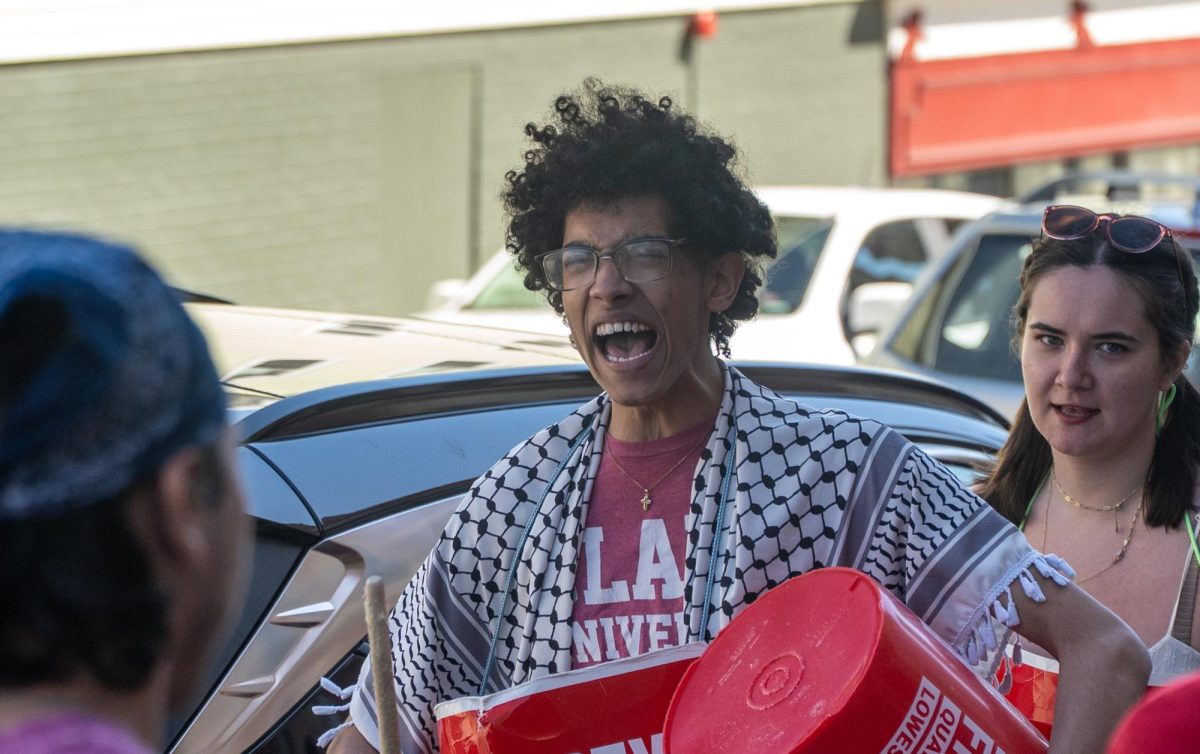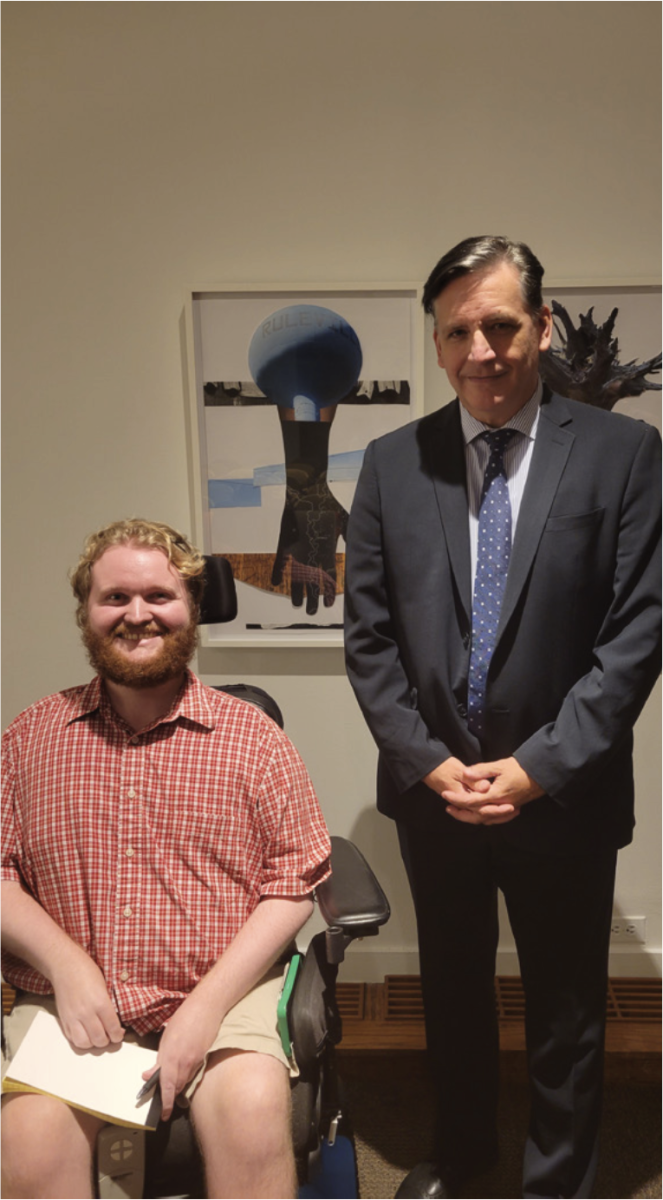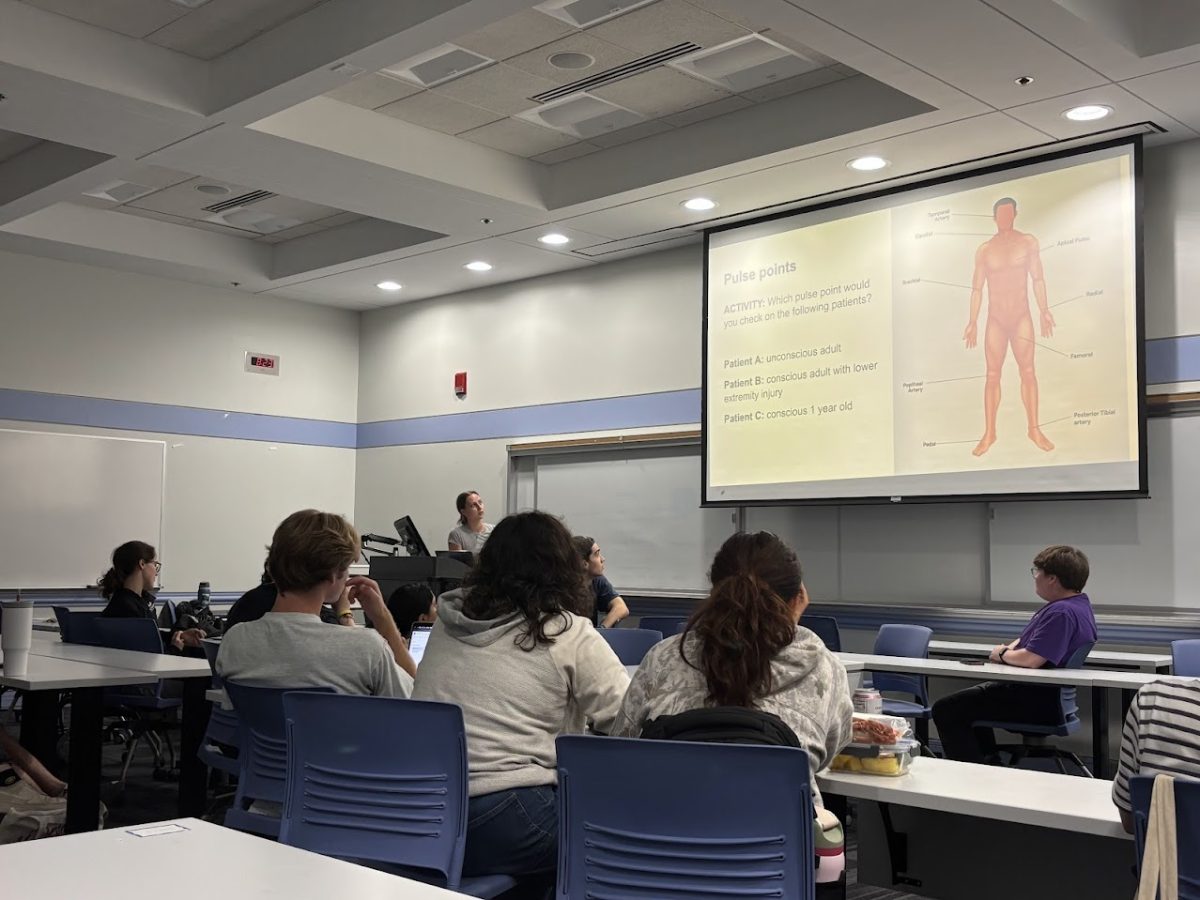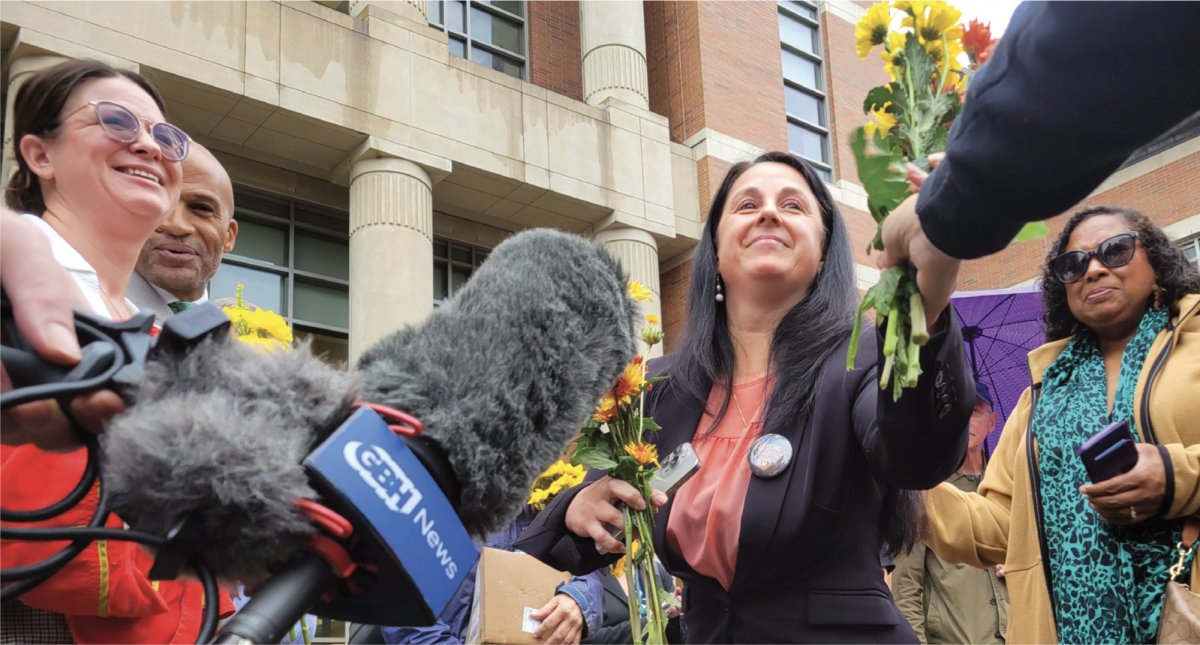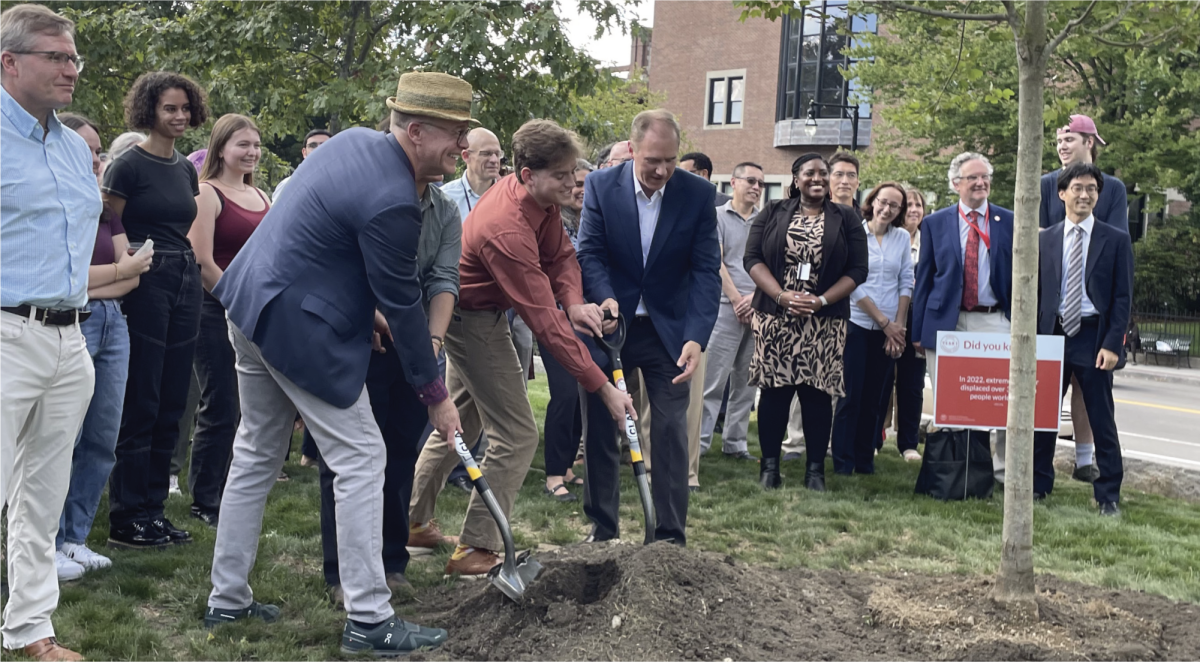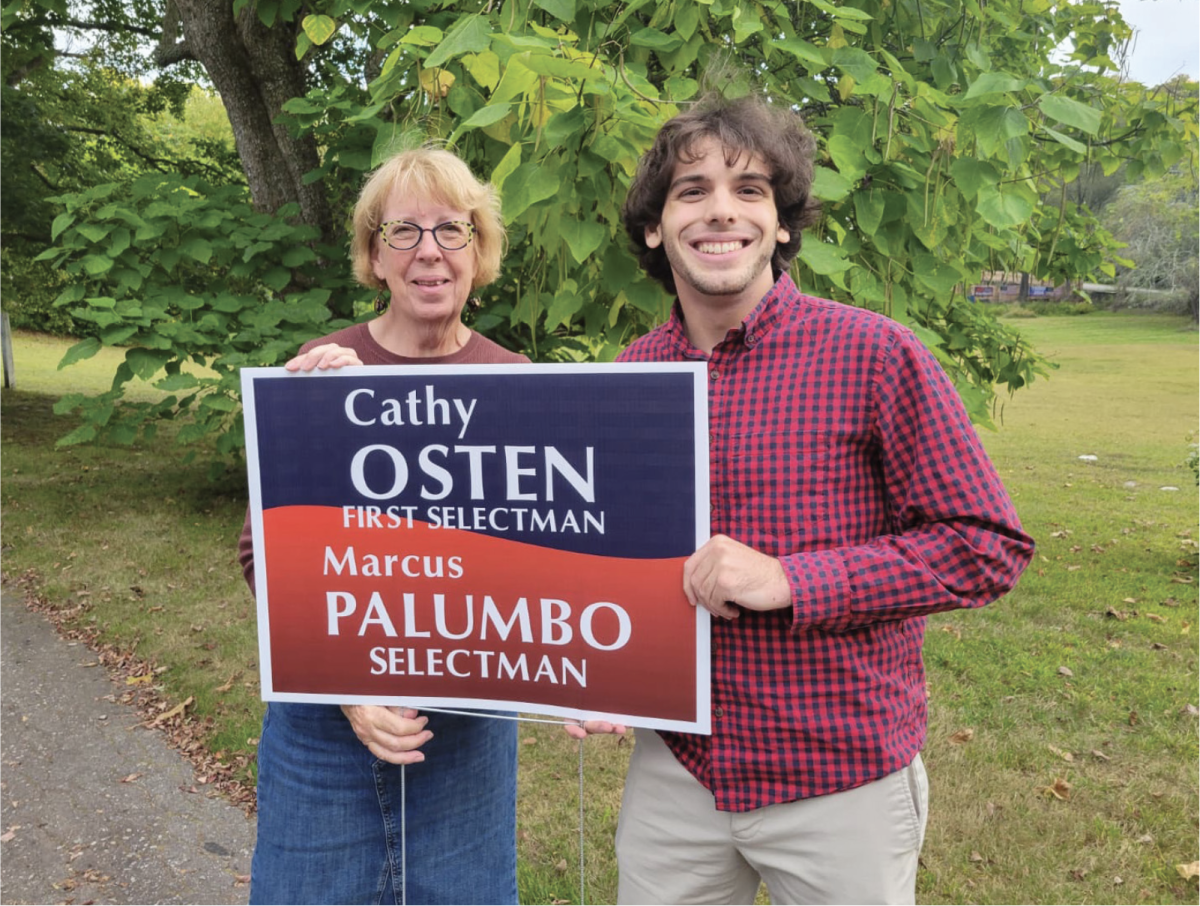On Thursday, March 13, Clark University Undergraduate student workers went on strike, demanding card-check neutrality in the hopes of unionization.
The union organization process began in Oct. 2024. On Jan. 17, 2025, it was announced via Clark University Undergraduate Workers Union (CUUGWU) Instagram that Clark University Undergraduate Student employees would be working with Teamsters Local 170 to begin the process of unionization. On Feb. 14, the petition to unionize was officially filed with the National Labor Relations Board (NLRB). After the petition was filed, the University’s lawyer responded to the act on Feb. 27, saying they would decline any formal unionization attempt of undergraduate students and threatened to take this decision to the NLRB, challenging the Columbia (2016) decision.
“Even if some or all of the students listed in the Petition are Section 2(3) employees, they do not constitute an appropriate unit for collective bargaining,” the University’s response stated.” “Pursuant to the Board’s holding in San Francisco Art Institute…which was wrongly overturned in 2016.”
Due to Clark’s “extreme anti-labor response,” the Teamsters pulled out of the petition on Feb. 27, according to the CUUGWU Instagram. On March 11, Teamsters held a vote to strike on Main St. out of the Teamsters solidarity truck. Out of the around 650 undergraduate workers, 319 student workers voted, 78 percent of whom voted in favor of the strike.
The strike began on March 13 at 6 a.m. The main picket line was at the gates on Main St., with the Local 170 Teamsters 18-wheeler and the solidarity truck, where strikers signed in, present most of the working days. Other locations throughout the strike included the Maywood St. loading docks, Woodland St., and the intersection of Florence and Downing St.
Throughout the 10-day strike, over 270 student workers logged upwards of a combined total of 3,300 hours on the picket line, according to an Instagram post by @cu.ugwu on March 23. Each student spent an average of 11.5 hours on the picket line during the first week of the strike, while two students picketed upwards of 72 hours. For the first three days, the picket lasted all day and night. Reduced hours started on Sunday, March 16, with picketing between 6 a.m. to 10 p.m., before changing again the next day to 8 a.m. to 10 p.m.
Working with a third party, the Teamsters supplied an economic relief fund for those striking. Each striker was allocated $177 if they were at the picket line for at least 15 hours during the strike’s first seven days, strike captains stated on March 17. The See You Collective (SYC) also had a separate fund for students to utilize in case the allocated money would not be enough to meet basic needs, which reached over $5,000 in donations at one point.
The most active day on the picket line was March 15, which was Destination: Clark, an event where admitted students and families visit campus. Picketers handed visitors flyers that provided information about the strike, including an invitation to come to the picket line to talk to students about undergraduate employment. There were five picket stations active between the hours of 9 a.m. and 3 p.m.
Several elected politicians endorsed the unionization efforts, including Worcester Mayor Joe Petty and U.S. Senator Ed Markey. Some Worcester City Council members even joined the picket line. The Information Technology Services (ITS) Help Desk was closed for walk-ins, and the library reduced its hours, closing at 6 p.m. Local publications, including The Worcester Telegram and Gazette, Worcester Business Journal and Worcester Sucks and I Love It covered the strike and interviewed students on and off the picket line.
Walking was not the only way students participated at the picket line; students contributed through poster drawing and sidewalk art, cooked food for strikers during dinner for the first three days, and several Clarkies brought instruments to play music, including a student band, the Pickle Jars.
On March 16, 10 students marched alongside the Local 170 Teamsters truck during the Worcester St. Patrick’s Day Parade. They carried a banner reading “Clark Loves Union Busting.”
The annual State of the University Address was held on March 19. Clark University faculty and staff and a reporter for The Scarlet attended the speech.
During the address, between 75 to 100 students protested the Address at four locations: two on either side of the Jefferson Academic Center, one on Main St. and another on Woodland St. Picketers made noise by chanting, playing instruments, and clapping. Another group in front of Jefferson peacefully lined up on the stairs and along the side of The Green wore the signs created by Teamsters. The students remained as the faculty and staff left the address.
At the event’s scheduled end time, about at least a dozen faculty members walked out of the address while Fithian was answering a question regarding his salary.
On March 23, it was announced via the CUUGWU Instagram that after 11 days, the Teamsters and student union organizers would be ending the strike.
According to strike captains, union organizers and strike captains had discussions with Teamsters, fellow workers and supporting faculty members, and decided to move to more focused actions in the efforts to unionize.
“Strikes are about using labor as leverage to force an institution to do something,” strike captain Hadas Brownstein explained to The Scarlet. “By the last day, there was no more leverage to be gained by striking.”
“The intention is to continue solidifying representative, horizontal leadership within the organizing committee, to continue educating, agitating, and organizing the student body and to continue building trust with community care,” Brownstein continued.
“We are incredibly grateful for the powerful show of solidarity from everyone who stood with us this week,” the Clark University Undergraduate Workers Union Organizing Committee stated on Instagram. “We are going to regroup, re-strategize, and come back stronger than ever. We are not done organizing. We will be back, and we will win.”
Disclaimer: The author is a student worker, but did not participate in the strike or picket line. Marcus Palumbo and Gabe Schmick contributed to this article.

